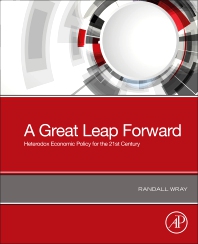
Publications
Working Paper No. 936
| September 2019
Fiscal Reform to Benefit State and Local Governments
The Modern Money Theory Approach
This paper will present the Modern Money Theory approach to government finance. In short, a national government that chooses its own money of account, imposes a tax in that money of account, and issues currency in that money of account cannot face a financial constraint. It can make all payments as they come due. It cannot be forced into insolvency. While this was well understood in the early postwar period, it was gradually “forgotten” as the neoclassical theory of the household budget constraint was applied to government finance. Matters were made worse by the development of “generational accounting” that calculated hundreds of trillions of dollars of government red ink through eternity due to “entitlements.” As austerity measures were increasingly adopted at the national level, fiscal responsibility was shifted to state and local governments through “devolution.” A “stakeholder” approach to government finance helped fuel white flight to suburbs and produced “doughnut holes” in the cities. To reverse these trends, we need to redevelop our understanding of the fiscal space open to the currency issuer—expanding its responsibility not only for national social spending but also for helping to fund state and local government spending. This is no longer just an academic debate, given the challenges posed by climate change, growing inequality, secular stagnation, and the rise of Trumpism.
Download:
Associated Program(s):
Author(s):
Related Topic(s):

